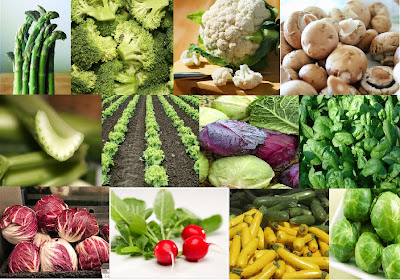Monday, August 9, 2010
Green Week: Thermogenesis
The more and more I read the more convinced I am that I am on the right path with my eating. Stop eating grains, starches and sugars and load up on vegetables, lean proteins, and low-glycemic fruits. I've incorporated thermogenic foods into my program for awhile, so I figured today as part of Green Week that we'd cover thermogenesis. What is thermogenesis? One of the biggest energy expenditures in humans is thermic, or heat energy. So thermogenesis is the creation of heat. We can do this through exercise (warm muscles work more effectively than cold muscles). We also thermo-regulate. The body does this by shivering (done by the muscles to create heat) or non-shivering (diet induced). When we're cold or eat lots of food the hypothalamus gland triggers the sympathetic nervous system (which controls things like heartbeat and breathing) to release neuroepinephrine from the synapse. This turns up thermogenesis (or think of it as turning up a thermostat) so less energy is used for work and storage and less goes to fat. This increase in thermostat causes less appetite (same as with exercise, it increases metabolism and you feel more energized). This is all important because you want to eat foods with higher thermogenic foods. Heat producing foods help burn stored fat and increases energy levels. They take calories to consume! Take for example broccoli (which already has few total calories) but in terms of thermogenesis has even fewer actual calories. This means you should try to consume carbohydrate foods with a higher thermogenic per unit of carbohydrate, which means you can consume more food! In addition eating these food correlate to a better metabolic rate and satiety. So basically you're eating MORE, food volume is important for appetite regulation. In addition thermogenic foods tend to be lower in carbohydrate total because you subtract fiber from carbohydrate total to determine "active carbs". Carbohydrate dense foods are nutrient sparse and carbohydrate sparse foods (thermogenic) tend to be nutrient dense. What foods are good at providing thermogenesis? The best thermogenic fruits are: apples, apricot, blueberries, cherries, peaches, strawberries, raspberries, pears, and grapes. Lean proteins are also a great source, which use 30% of the calories they contain just for digestion and processing. Usually when I talk about thermogenesis I look at vegetables. The following vegetables don't even count toward a daily carb limit (eat unlimited quantities): asparagus, broccoli, cauliflower, Brussels sprouts, celery, lettuce, cabbage, mushroom, radish, radicchio, and spinach. Bottom-line consuming lean proteins and large amounts of thermogenic vegetables is the way to go. You won't starve- you can eat UNLIMITED amounts of the vegetables. You eat more while consuming less carbs and calories, but get more nutrients!
Labels:
Nutrition
Subscribe to:
Post Comments (Atom)


No comments:
Post a Comment